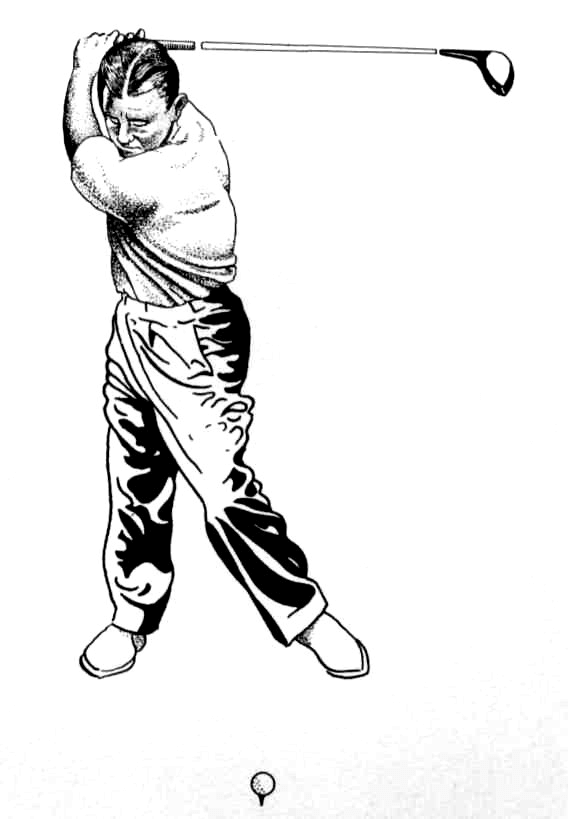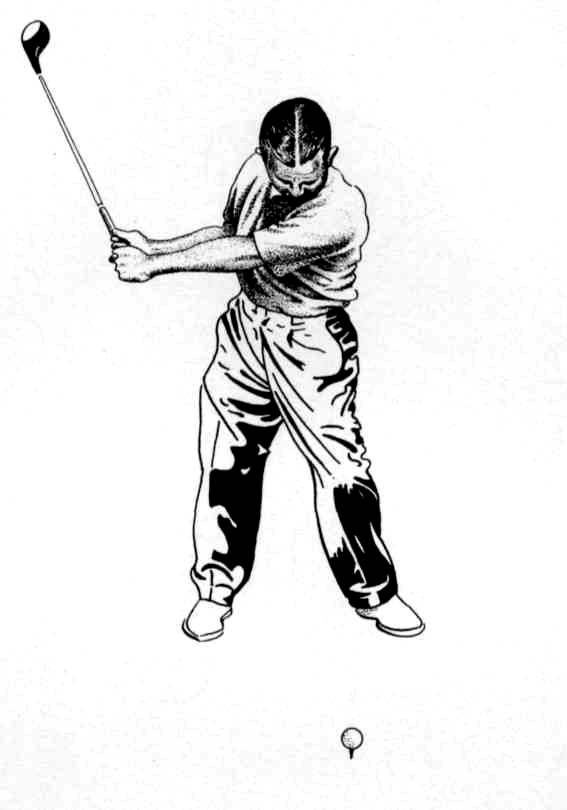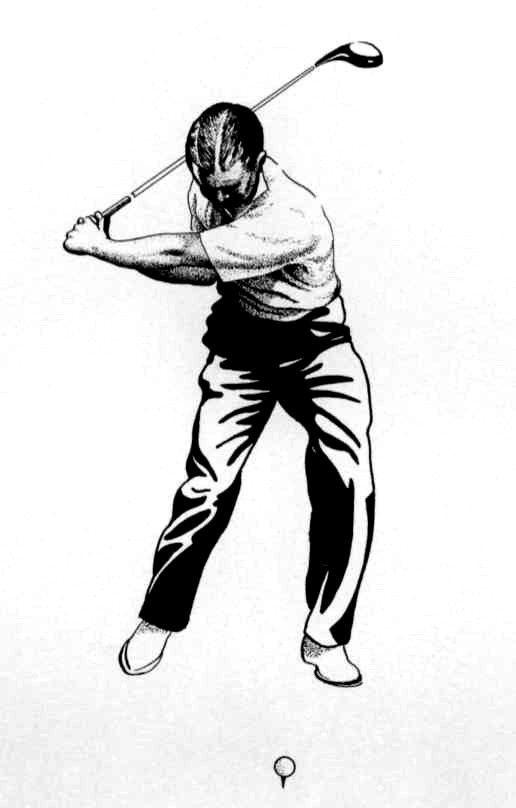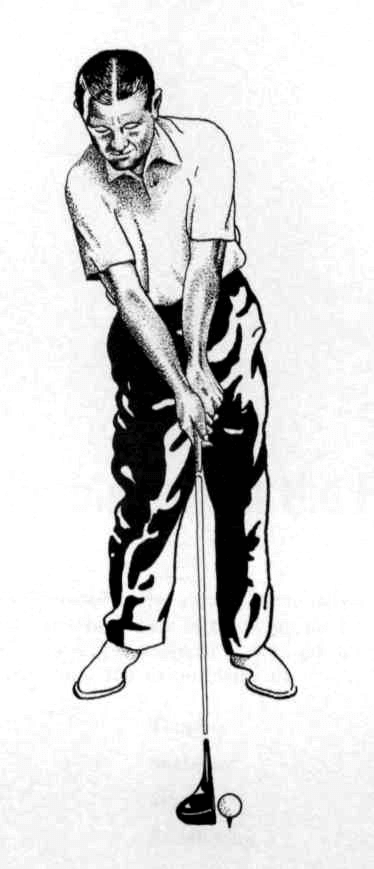I’m sure that sudden loss of distance has crept into your game at one time or another. But this become more of a problem as you get older. Golfers below the age of 30 years old usually hit the golf ball the farthest, averaging 238 yards.
But as you get older every ten years, researchers find that the distance declines by around 10 yards. Your muscles become weaker causing your swing speed to decrease, thus reducing yardage. Nevertheless, technique plays a major role in how far you hit the golf ball.
In this article, we’ll take a look at some of the ways you can hit the golf ball further without depending too much on strength from your muscles such as your forearms. These tips are not just meant for players who are getting older, but it can be applied by golfers of all age.
Here is how to hit the golf ball further as you get older:
- Shift some weight to the right leg on the backswing
- Coil or turn the body
- Return weight to the left foot immediately at the start of the downswing and move the right elbow in close to your side.
- Hit down and through the ball
Table of Contents
1. Shift Some Weight To The Right Leg On The Backswing
Often times, in an attempt to keep the head steady, a golfer will shift his weight to the left on the backswing. He will probably fall back to his right foot on the downswing, sacrificing a great deal of power.
Make certain that you turn and shift your weight in the same direction as you are moving the club. For right-handed players this would mean that some weight would shift to the right foot in rhythm with the club head’s move in that general direction.

2. Coil Or Turn The Body
Swaying causes many golf problems, including sliced, topped and “fat” or scuffed shots. However, it is also a major cause of loss of distance.
When, instead of turning his body and shoulders on the backswing, the golfer moves his body laterally to the right, he fails to fully extend or coil the muscles of his left side.
When these big muscles of the back and legs are not fully coiled, they fail to generate maximum power to the arms, hands and, finally, the club head when uncoiling on the downswing. Swaying also puts too much burden on the arms which cannot, in themselves, provide maximum club head speed.
At one time in our lives most of us have played with model airplanes, the kind that are wound by twirling the propeller which is attached to a rubber band. So it is in the golf swing except that you are the rubber band.
On the backswing the body should coil or turn, yet still remain in the same area as it occupied at the address position. Generally speaking, the more fully this coiling stretches the left side muscles, the faster the club (like the propeller) will unwind on the downswing.

3. Quick Weight Shift And A “Tight” Right Elbow.
Failure to achieve a straight and taut left arm and a fully cocked right arm at the start of the downswing will result in loss of distance.
The golfer who starts his downswing with his left arm bent breaks the “circuit” of power which should be flowing from his legs and back muscles to the club.
It’s like shutting off a flow of water by crimping a garden hose. Also, failure to keep the right arm bent, or “cocked,” at the start of the downswing encourages a premature release or uncocking of the wrists.
Return weight to the left foot immediately at the start of the downswing and, at the same time, move the right elbow in close to your side. These combined movements will automatically cause the left arm to straighten and the right to cock early in the downstroke.
Then, as the club head enters the hitting area, the left arm will be ready to conduct power to the club and the right arm can straighten and thrust the hands and club head through the ball.

4. Hit Down And Through The Ball
Pulling up in the hitting area is a common error that significantly reduces golf ball distance. This fault is a result of improper weight shift on the downswing. The golfer has prematurely straightened his right arm and uncocked his wrists well before the club head reaches the point of impact. Most all of his power has already been spent.
By leading with the left side and holding wrist “break” until the last possible moment, you save your power for the hitting area. This allows you to achieve the maximum club head speed at point of impact and to avoid raising your body in the hitting area.

Practice Drill To Help Hit The Golf Ball Further
I’d like to suggest a practice technique that has helped me regain distance. Strangely enough, this involves practicing putts from 5 to 50 feet in length. In such practice, power as such is de-emphasized.
The premium is on elements of “precision,” such as “touch,” timing, square-to-target alignment of hands and clubface, and simply hitting the ball squarely.
Then, when the player progresses from putting to short approach shots to full shots, this emphasis on precision will pay off in added distance.
Thus, putting practice provides a foundation for full iron and wood shots. It’s like opening a door — once the key (in this case precise putting) is properly inserted into the lock (your swing), the door (longer drives) opens quite easily.
When practicing putting to build a base for longer drives, concentrate on contacting the ball squarely in the center or “sweet area” of the clubface.
Strive for a sharp and crisp sounding “click” as the putter meets the ball. Seek club-ball contact that produces a minimum of jar, shock or vibration.
My friend Frank Walsh used to advise that “as you swing you should train yourself to listen for the click.” Anticipating the click serves both as a goal and a check for a precise swing. Try it the next time you play.
In putting, though force is a minimum objective, I am happy to “get distance” without consciously striking the ball hard. The more distance I get on putts with the least effort, the better I like it.
This tells me that my stroke is well-timed and in the groove so that the clubface strikes the ball squarely. Then I know that I can expect these same virtues on full shots.
Final Verdict
The golf swing should be a connected and coordinated unit, within which proper timing is paramount. Good timing gives the player all the mechanical advantages which have been built into his equipment.
When loss of distance occurs, chances are good that the player’s timing is at fault. However; “timing” is a general term, and proper timing is based on several swing fundamentals. If one or more of these fundamentals are executed improperly, bad timing and loss of distance result.
Fundamentals upon which good timing is predicated include: Good posture and balance; proper shifting of weight during the swing so as to achieve maximum control and momentum of the club head; and, of course, true alignment of the hands especially the right with the clubface both at address and at impact.



